Aruba is a tourist destination in the Caribbean sea, around 620 miles west of the lesser Antilles. Aruba scuba diving is a popular tourist activity, with the island offering opportunities to explore natural reefs, shipwrecks, and beautiful marine life.
Recreational diving is mostly on the south side of the island, where the water is clear and ideal for Open Water level divers. The island’s north side has a stronger ocean current, requiring divers with more logged dives and varied experience.
If diving is your passion, these sites should definitely make your itinerary…
Table of Contents- Is There Weed In Aruba?
- Is Medical Marijuana Legal In Aruba?
- Are Marijuana Cookies Legal In Aruba?
- What Is The Punishment For Smoking Weed In Aruba?
- Can I Take Medical Marijuana To Aruba?
- Is Cbd Legal In Aruba?
- Cbd Vs. Marijuana: What's The Difference And Why Should You Care?
- Where Can You Smoke Up In The Caribbean?
- Jamaica
- Antigua and Barbuda
- Trinidad and Tobago
- Saint Kitts and Nevis
- The U.S. Virgin Islands
- Final Thoughts: Is Marijuana Legal or Illegal in Aruba in 2023?
1. Kappel Wreck

The JADS dive center created the dive site in 2009 following the deliberate sinking of the Kappel boat on a sandy patch of the sea next to the Mangel Halto Reef. It is at a depth of 35 to 45 feet and is popular with beginner divers. The diving site has plenty of natural light, allowing you to take incredible photographs of the surroundings.
Coral growths are still developing on the boat, but some sections have soft coral, which has grown rapidly and provides an ideal home for different species of marine life. Sea creatures you will see at this site include eels, damselfish, angel fish, and a few sea turtles.
2. Black Beach

The Black beach dive site is located on the north coast of Aruba. Its name results from the rounded black stones along the shore that shelter it from the strong waves and provide a great spot for beginner divers. This diving site has plenty of marine life, including various fish species and lobsters. You will also find sea fans and several coral structures that thrive thanks to the mild current and clear water.
3. Antilla Shipwreck
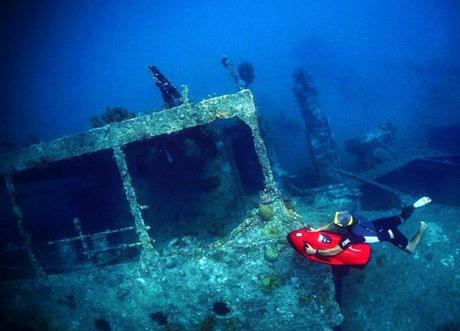
The M. S. Antilla is one of the largest shipwrecks in the Caribbean, spanning over 400 feet. It is a German freighter sunk by the Dutch on May 10th, 1940, during World War two. The Antilla is considered one of Aruba’s best dive sites because of the large areas you can penetrate safely and the well-developed marine ecosystem.
Part of the ship is still visible above water, with the deepest sections around 60 feet below. This makes it a composite dive site for both beginner and advanced divers, and diving here is a great opportunity to earn your wreck certification.
Marine life on the wreck includes beautiful tube sponges that cover the ship’s skeleton and large coral formations that provide homes for several tropical fish species. Other marine life present at the Antilla shipwreck includes shrimp, lobsters, orange sea anemones, and moray eels. Reaching the dive sites requires a 10-minute boat ride from Malmok Beach.
4. Pedernales Wreck
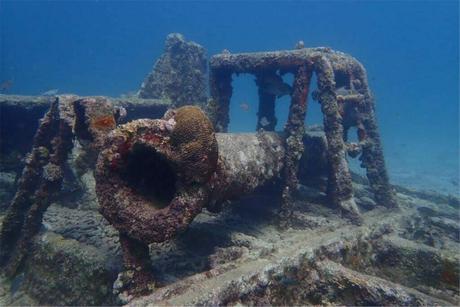
The SS Pedernales was an Italian-built, British-operated oil tanker which was shot by a German torpedo in 1942. Although the damage did not sink the ship, continuous target practice by the Aruba Military made it sink in the following years.
The bow and stern sections of the ship were salvaged, leaving only the midsection laying 25 feet deep in front of Palm beach. Pedernales Wreck is popular with beginner divers because of the generally low currents and reliable visibility.
It features plenty of marine life, including stingrays, parrotfish, goatfish, and schools of grunts. Other marine species available at the site include turtles, lobsters, moray eels, nurse sharks, and groupers.
5. Baby Beach
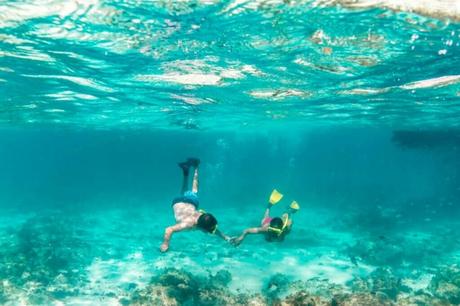
The dive site is a blue and crescent-shaped bay in San Nicolaas, popular with shore, reef, and free divers. Most diving happens on the reef outside the bay, where you will see colorful coral formations and plenty of marine life, including stingrays, barracudas, and parrot fish.
You can access the site directly from the beach, but strong currents beyond the bay can be challenging for amateur swimmers. The site reaches a depth of 52 feet, and the water is clear enough to provide visibility of up to 65 feet.
6. Cabeza Reef
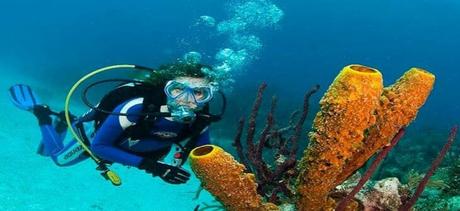
This dive site is suited for advanced and experienced divers because of the strong underlying current. It sits on the south of Aruba and is teeming with marine life. You will marvel at the elegant coral forests, and it is the best place for bigger fish sightings like groupers and nurse sharks. It is recommended to have a diving partner, preferably a qualified local instructor or dive master because the intense current can lead to a lack of exit opportunities.
7. Serito Pinnacle
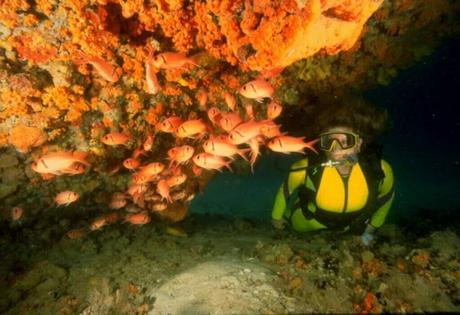
Offshore from Cabeza Reef is the Serito Pinnacle dive site. This secret dive site is only suited for advanced divers, given the strong current, and you will need to be accompanied by a qualified local guide. Access to the site is only available by private charter.
Once there, you will see different types of coral, such as sponge, soft and hard coral. It also attracts plenty of reef fish living within the colorful outcrops. You will also find cleaner shrimp, ornate crabs, and frogfish hiding amongst the corals.
8. Pet Cemetery
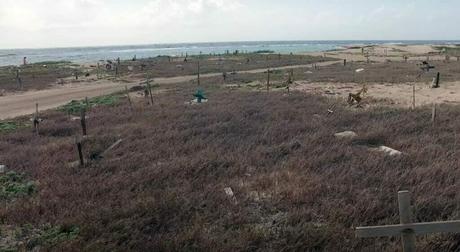
The dive site lies beyond the final resting place for Aruba’s beloved pets. Despite its odd name, it has a reef bustling with life. Coral varieties include mustard hill, fire, finger, giant brain, and pencil. It also hosts different fish species such as cowfish, trunkfish, triggerfish, parrotfish, damsel fish and gobies. Also present are large schools of surgeonfish, making the whole experience mesmerizing. You can head further along the reef to Esso Club for a more challenging dive, where the reef gets narrower and steeper.
9. Hole in the Wall
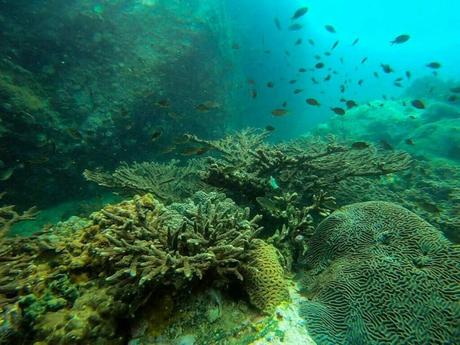
This dive spot is popular with drift divers because of the strong current that pushes you along the narrow reef to Mangel Alto. The site is an impressive structure on the reef where several fish take shelter from the current. You will also see brightly colored coral as you drift dive and conclude your dive through a sandy channel into the lagoon. The lagoon’s minimal current and clear visibility make it a great spot for snorkelers and an ideal safety stop.
10. Punta Basora
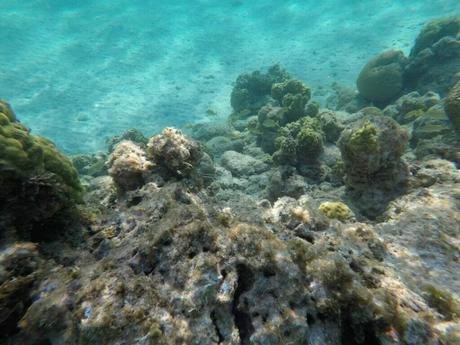
Punta Basora features a narrow reef that stretches out from the easternmost point of Aruba’s shoreline. Its deep blue water attracts Aruba’s megafauna, including hammerhead sharks, hawksbill and loggerhead turtles, eagle rays, dorados, and barracudas. Shallower sections of the dive site are ideal for snorkeling on a calm day, where you can marvel at the abundant marine life.
11. Star Gerren

Star Gerren is a 300-foot German cargo shipwreck sunk in 2000. It lies four kilometers west of the Holiday Inn Resort at a depth of 63 feet. Several holes have been made in the ship’s hull to make it easier for divers to enter and exit the different compartments. Amateur and skilled divers are advised to use a surface buoy when exploring the site because of the challenging waters.
The upside-down wreck provides an ideal home for dark-dwelling creatures, which you can spot with a torch. Other sections of the ship are also full of marine life, including corals, schools of barracuda, French angel fish, eagle rays, and grunts.
12. Mas Bango Reef
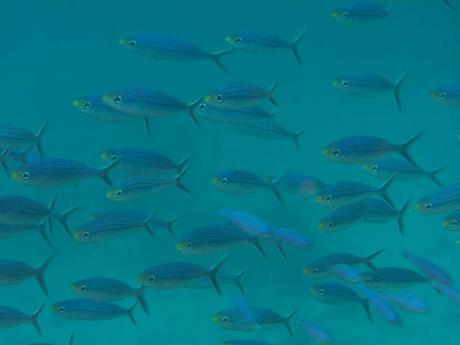
The site is on the southeast coast of Finger reef. It is a slope coral reef, with the top at 5 feet and the bottom at 130 feet, making it an ideal location for amateur and experienced divers. You will see different sea creatures as you descend the slope.
At the top are schools of various reef fish swimming between the brightly colored corals and anemones. As you keep descending, you will find schools of tuna, barracudas, surgeon fish, and angel fish. The clear water and variety of marine life on Mas Bango Reef make it a popular spot for macro photography.
13. Renaissance Island Plane Wrecks
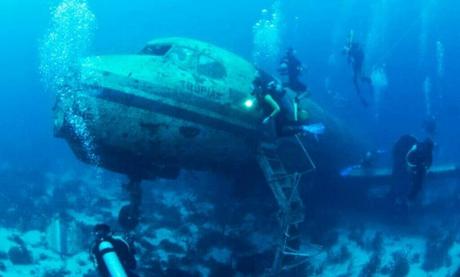
Renaissance Island is an exclusive location off Aruba’s coast, only accessible to guests of the Renaissance Creek Aruba Resort. It has two deliberately sunk airplanes, a YS-11 turboprop, and a DC-3, providing unique dive sites. The airplane doors were removed before the sinking, allowing you to explore the wreckages easily.
The YS-11 sits at 40 feet and is open to Open Water divers. More experienced divers can explore the DC-3, which sits at 78 feet. Both locations have abundant marine life, including stingrays, moray eels, and barracudas. Once you finish your dive, you can enjoy chilled drinks at the private cabanas and interact with the resident flamingoes and iguanas.
14. Harbor Tugboat Wreck
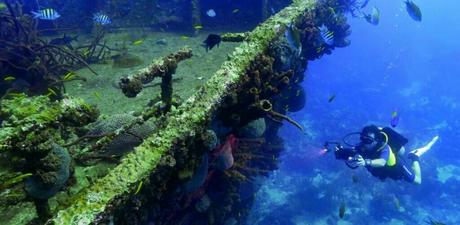
This dive site is a short distance from Aruba’s Cruise Ship port and sits at a depth of 80 feet. It has a gentle reef slope, home to different coral and fish species, making it ideal for macro photography. You will need a diving torch to enjoy the different colors of this dive site. Marine life at the site includes moray eels, octopuses, frogfish, and stingrays.
15. Debbie II Wreck
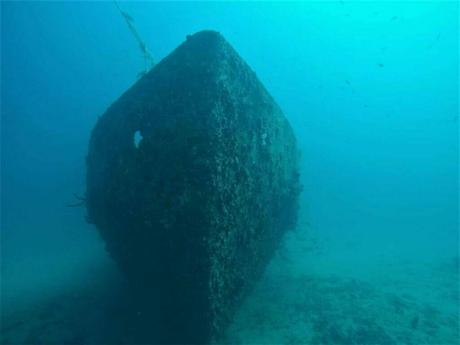
The Debbie II Wreck is a 120-foot-long fuel barge deliberately sunk in 1992 to create an artificial reef. It sits 70 feet deep off the coast of Malmok and is easily accessible to divers staying at the several high-rise hotels on the shore. The wreck features growths of leaf and brain corals, with sponges and sea fans occupying the remaining spaces. It is also home to various marine species, including lobsters, turtles, sea horses, and reef fish.

